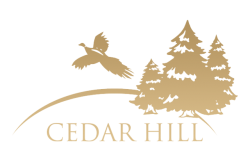Dog Training
Pheasant Hunting Dogs
Training
I need to preface my comments here. I am not a professional trainer and a professional trainer may disagree with some or all of the following tips. I have trained several of my own dogs and help people train their dogs often. I hope the following tips will help you get the most out of your hunting buddies.
Leave your whistle in your pocket most of the time. Pheasants have amazing hearing and if your making a bunch of noise with a whistle or constantly yelling at your dog you will probably not be as successful as you could be. Dogs are like children, if your yelling at them all the time or blowing a whistle at them constantly, they just turn their hearing off. Don’t be a control freak. I have shock collars on all my dogs. They get a voice command first, then if they don’t listen to that, they get vibrated with the collar, if they still don’t listen they get a nick from the collar. I don’t believe I have ever needed to use the full blown shock from the collar. I also use the lowest setting possible to get a reaction out of the dog. That setting will depend on the collar type. You don’t need to use the highest setting. After a short period of time, they learn they need to listen to the voice command. Very rarely do I need to go to the vibration of the collar, much less the nick setting of the collar. A collar should be used sparingly.
Never shock a dog when they have a bird in their mouth. This should be reward time for their hard work. If they won’t bring it to you, walk in the opposite direction. They are playing a game with you and they need to know that game is unacceptable. Give them plenty of praise when they make a nice retrieve. If they are playing the game, when I do get the bird, there are no high 5’s given to the dog.
I let my dogs range 25 to 30 yards from me. My dogs are flushers. Pointers are bred to run a bigger area. If a pointer is busting birds on you, you may need to keep them closer until they start holding a point. If I am hunting with a group of guys, the dogs are allowed to run to that same 25 to 30 yards from the far left or far right hunter.
I determine the direction we walk until the dog gets hot. Once the dog is hot, we go which ever way the dog wants to go.
Always try to work your dog into the wind if possible. A quartering wind also works if you need to. I never walk with the wind.
If you have a younger dog, take less birds and go more often if using a game farm. This doesn’t help my bottom line, but it is the truth. The dog will get more benefit by doing a shorter hunt with less birds, rather than a bunch of birds once a year. Leave them wanting more. As they get older, keep adding more birds if you would like.
Getting a dog to quarter to the left or right is fairly easy. They will always want to go the direction that you do. I call the dogs name, point in that direction and walk that way. After doing this many times, the dog will naturally start going that way just by you pointing. You won’t need to move a step.
When working on your retrieves with a young dog, a starting platform works well. It should be made out of a piece of plywood that is 2′ X 2′ and have a 2″ X 6″ frame to support it. This gets the dog on a 6″ elevated platform that is their home base. Decide what side of your body you want the dog to be on and stand next to the platform to do your retrieves. The dog knows he needs to be on that platform before he gets to do another retrieve.
Once you buy a dog, you will be training pretty much the rest of that dog’s life. The number of corrections should get much less as they get older and gain more experience, but there is always room for improvement.
Most dog trainers are advocates for “force fetching.” There are many video’s and books to cover this topic. It is too lengthy to address here, but I am also in favor of it. It usually takes a couple of weeks to complete. Do your homework.
If you are hunting and the dog gets hot but cannot find the bird, back out. Come back in 30 minutes or so and make another sweep through the area. The same holds true if you hit a bird and cannot find it, back out and let the scent disperse and start fresh in a half hour. The combination of the dog scent, human scent, and bird scent is very hard for a dog to figure out. Letting that area settle down and letting the scent disperse will make it much easier for the dog to locate the bird. If you down a bird and the dog did not get a good mark on the bird, help him out and get him in the right area. DO NOT HELP LOOK FOR IT YOURSELF, you are doing more harm than good. The dog has a much better nose than you do, let him use it.
Every dog is different, just like your children. If you have a timid dog, do not force things on him. Let them set the pace on getting a bird in their mouth, on chasing a bird, or anything you’re trying to teach them. Being heavy handed will only ruin a dog. You need to work a little slower and more patiently with the dog to get them over their fears.
Dogs can be gun shy AND bird shy. I have seen several dogs that don’t mind a gun shot but turn inside out when a bird flushes in front of them. Both conditions are serious, but not impossible to get them over. It will take a lot of patience, but it can be corrected. NEVER take your dog to a trap grounds to get them over being gun shy or to break them into gun fire.
Cost
GUIDED HUNTS
If you would like to hire our guide and dogs, please contact us in advance to reserve your time. Guided hunts are $45.00 for a half day.

